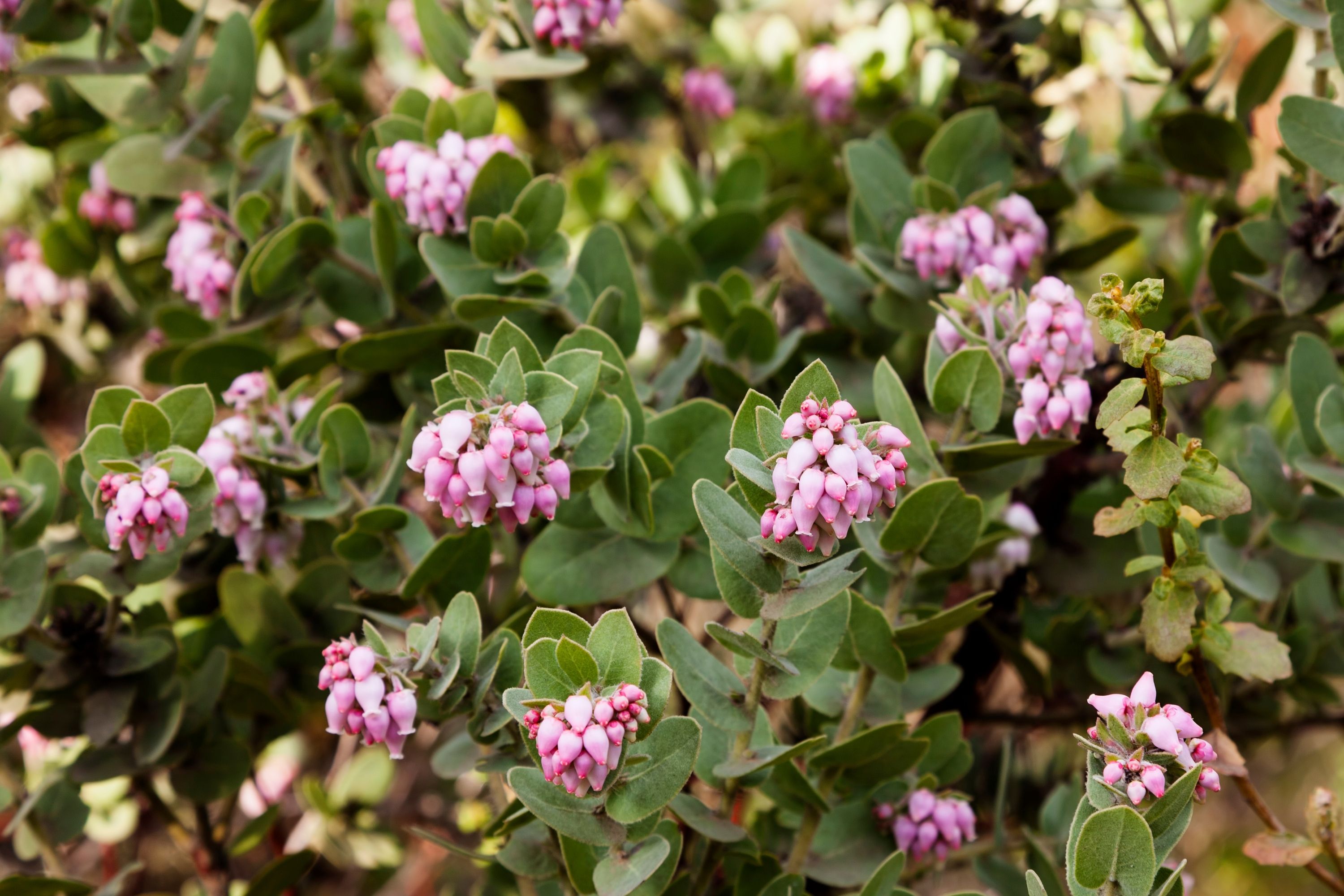Mount Diablo manzanita
(Arctostaphylos auriculata)

Description
Arctostaphylos auriculata (Mount Diablo manzanita) is an endangered species of Arctostaphylos endemic to California, and limited in geography to the area surrounding Mount Diablo, in Contra Costa County. Arctostaphylos auriculata is a woody shrub 1–4.5 m high with serpentine, glandless stems covered in white hair. The short (1.5-4.5 cm), silvery leaves overlap and have deeply lobed bases. It flowers densely in white February through May. The fruit is also hairy and small (5–10 mm). The Mount Diablo manzanita has no basal burl for regrowth and must propagate by seed. Growing in sandstone chaparral around 150-650 meter elevation, the thick undergrowth of Mount Diablo manzanita is often accompanied by poison oak or California wild grapes. Arctostaphylos is a genus of plants comprising the manzanitas and bearberries. They are shrubs or small trees. There are about 60 species, of Arctostaphylos, ranging from ground-hugging arctic, coastal, and mountain species to small trees up to 6 m tall. Most are evergreen (one species deciduous), with small oval leaves 1–7 cm long, arranged spirally on the stems. The flowers are bell-shaped, white or pale pink, and borne in small clusters of 2–20 together; flowering is in the spring. The fruit are small berries, ripening in the summer or autumn. The berries of some species are edible. Arctostaphylos species are used as food plants by the larvae of some Lepidoptera species including Coleophora arctostaphyli (which feeds exclusively on A. uva-ursi) and Coleophora glaucella. Manzanitas, the bulk of Arctostaphylos species, are present in the chaparral biome of western North America, where they occur from southern British Columbia in Canada, Washington to California and New Mexico in the United States, and throughout much of northern and central Mexico. Three species, the bearberries, A. alpina (alpine bearberry), A. rubra (red bearberry) and A. uva-ursi (common bearberry), have adapted to arctic and subarctic climates, and have a circumpolar distribution in northern North America, Asia and Europe. An unusual association of manzanita occurs on Hood Mountain, in Sonoma County, California, where stands of pygmy forest dominated by Mendocino cypress are found.
Taxonomic tree:







